Have you ever felt like life’s chaos is just too much to handle, and all you need is a peaceful place to reconnect with yourself? That’s exactly how I felt before I stumbled upon the idea to Visit Pankala Narasimha Swamy Temple: A Journey of Faith. I had heard stories of this sacred place tucked away in Andhra Pradesh, where devotion speaks louder than words and I knew I had to experience it for myself.
In this blog, I’ll walk you through everything you need to know before visiting this powerful temple from its legendary history and spiritual significance to darshan timings, how to reach the temple, and what makes it so unique. Whether you’re planning a pilgrimage or just curious about its divine energy, this guide will help you make the most of your journey.
The Temple’s Unique Significance
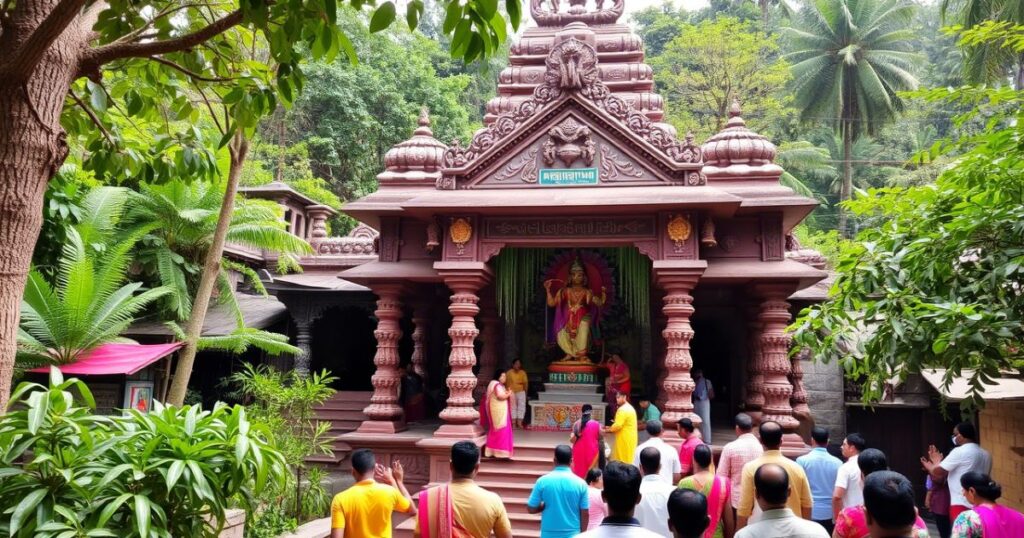
What makes this temple truly remarkable is its dual presence of Lord Narasimha. At the hilltop, you’ll find Panakala Narasimha Swamy, and at the base, there’s the Lakshmi Narasimha Swamy Temple. Devotees believe both forms radiate divine power, offering protection and prosperity to those who visit.
“Panakala” refers to jaggery water, which is poured into the deity’s open mouth as an offering. What’s astonishing is that only half of the Panakam is accepted, while the rest is miraculously thrown back with a gurgling sound signifying the deity’s satisfaction. This centuries-old ritual remains the temple’s most unique and faith-filled attraction.
The Legend Behind the Temple
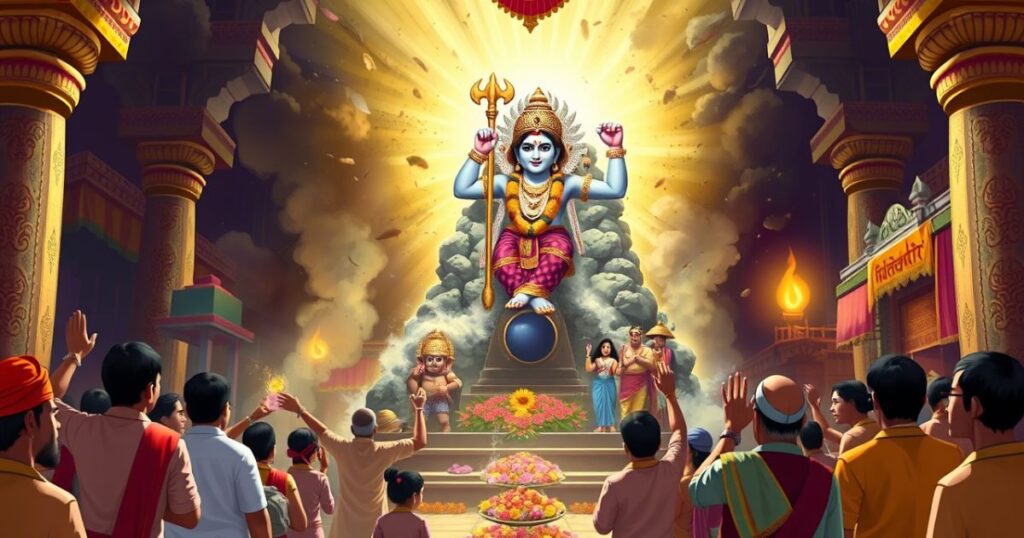
The story behind Panakala Narasimha Swamy adds a layer of spiritual charm to the temple. It is said that Lord Narasimha appeared to vanquish a demon named Namuchi, who had caused havoc among gods and humans alike. After the victory, the Lord chose to stay at Mangalagiri in a peaceful form, accepting jaggery water instead of blood offerings.
This transformation from fierce protector to tranquil deity is why the temple is a symbol of balance, compassion, and divine grace. It’s not just a place of worship it’s where devotees come to experience faith and miracles at Panakala Narasimha Temple.
Architecture and Devotional Vibes
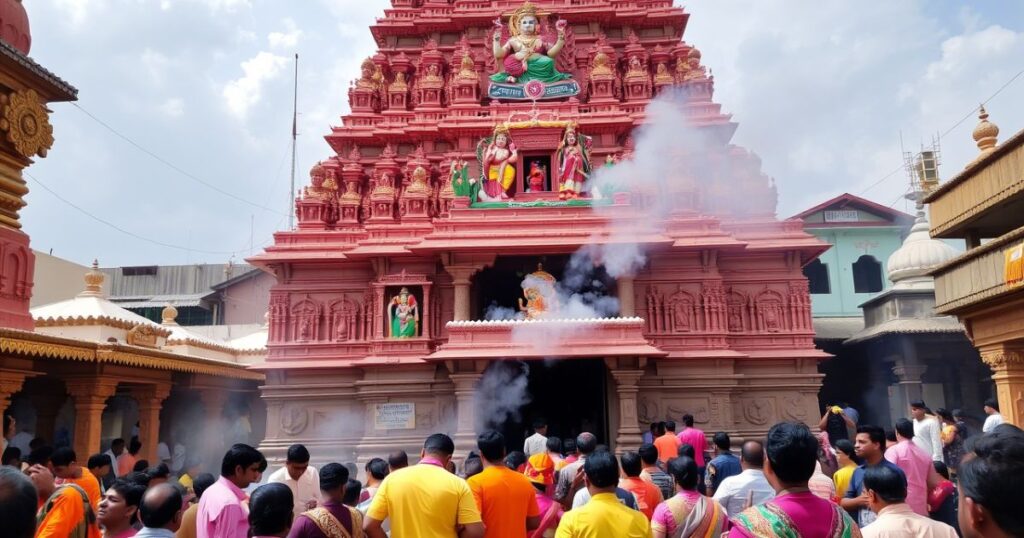
The architecture of Mangalagiri Panakala Narasimha Temple is modest yet spiritually profound. The hilltop temple is surrounded by lush greenery, offering a breathtaking view of the Krishna River basin. The sanctum itself houses a deity with an open mouth, designed specifically for the Panakam ritual.
As you walk through the temple, the chants, the bell sounds, and the scent of incense build an atmosphere of calm. Every corner whispers stories of belief and centuries-old traditions. It’s easy to feel like you’ve stepped into a timeless spiritual dimension.
Festivals and Celebrations

Among the many festivals celebrated here, Brahmotsavam stands out as the grandest. Held during March and April, it draws thousands of devotees who participate in colorful processions, special prayers, and traditional performances. The town of Mangalagiri turns vibrant with music, lights, and joy.
Other major days include Narasimha Jayanti and Vaikunta Ekadasi, where rituals extend from dawn till dusk. These celebrations offer a glimpse into the cultural heritage of Andhra Pradesh temples, where faith is not just practiced it’s celebrated.
A Must-Visit Spiritual Experience
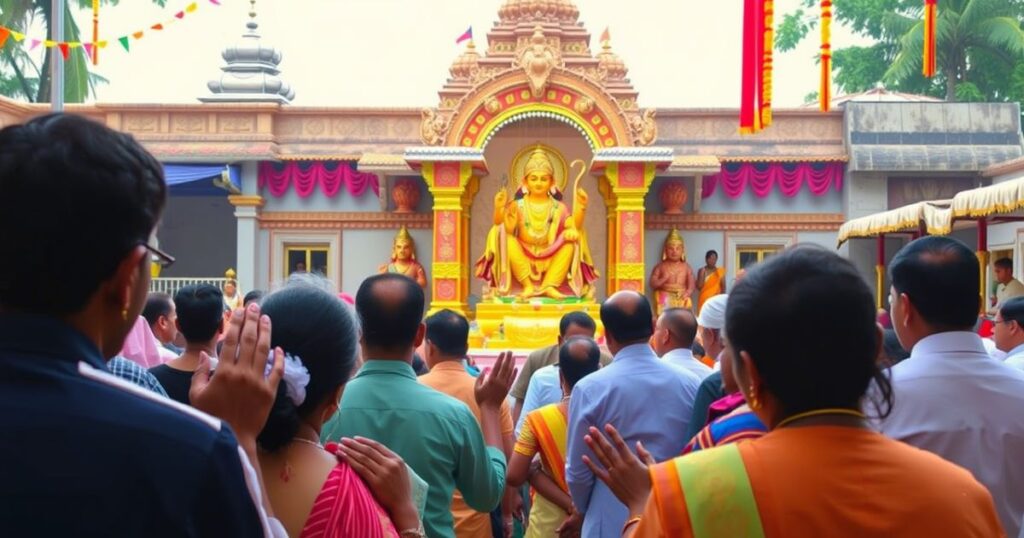
When you Visit Pankala Narasimha Swamy Temple, you’re not just entering a temple you’re stepping into an experience of ancient faith. Many visitors share stories of inner peace, answered prayers, and emotional clarity after their visit.
Whether you’re religious or just spiritually curious, this is a place where belief feels real. Surrounded by nature, immersed in rituals, and embraced by centuries of tradition it’s a divine experience for devotees and seekers alike.
Read Also:The Ultimate Guide to Visiting Tank Bund Hyderabad
History of Mangalagiri Panakala Narasimha Temple
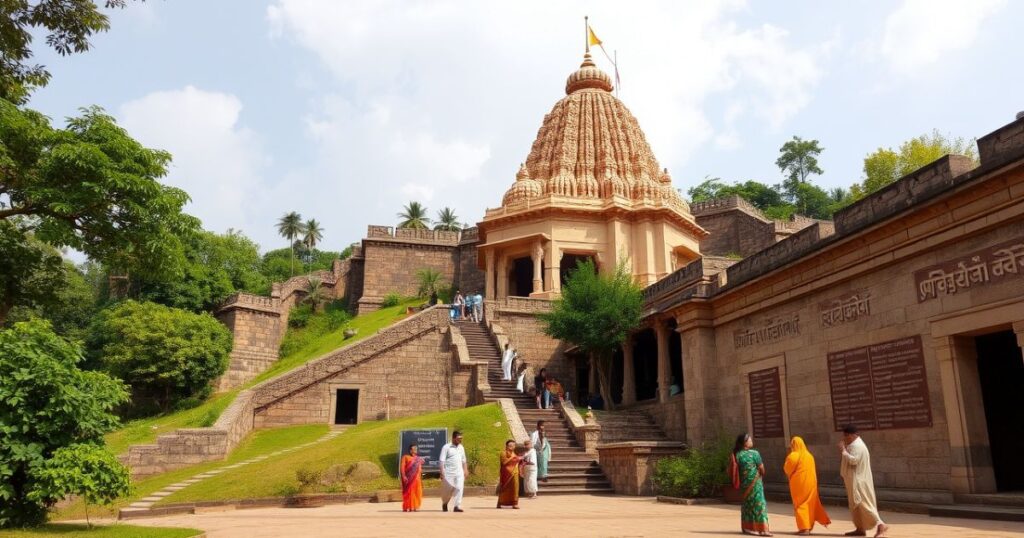
This temple is one of the most ancient temples in India, with references found in inscriptions dating back to the 11th century. Historical records show that kings from various dynasties—including the Vijayanagara Empire patronized this temple, contributing to its development and preservation.
Over time, the temple became a symbol of Andhra’s religious unity. It welcomed all castes and communities, making it a cherished part of the Panakala Swamy temple history.
The Appearance of Panakala Narasimha on Mangalagiri Hill
It is believed that Lord Narasimha chose Mangalagiri hill as his peaceful abode after slaying the demon Namuchi. The hill is considered a sacred energy point, and even today, locals speak of its mystical aura and spiritual vibrations.
Many pilgrims climb the hill barefoot as a form of penance and devotion. With every step, they believe they are getting closer to the Lord’s presence and leaving behind their worldly worries.
Great Personalities Who Visited the Temple

From ancient rulers to modern saints, many great personalities have visited the Mangalagiri Panakala Narasimha Temple. The revered saint Chaitanya Mahaprabhu is said to have offered prayers here. Even rulers like Krishnadevaraya are believed to have funded temple rituals and structures.
These visits highlight the temple’s historic and spiritual prestige, adding to its status as a South India pilgrimage destination.
Deities of Mangalagiri Panakala Narasimha Temple
Apart from Panakala Narasimha, the temple complex includes shrines for Lakshmi Devi, Garuda, and other divine beings. Each deity has its own unique story and significance.
Devotees often perform special pujas and Archana to these deities for health, peace, and prosperity. The entire complex offers a 360-degree spiritual experience.
Architecture of Mangalagiri Panakala Narasimha Temple
Built using native stone, the temple reflects classic South Indian Dravidian design. The main sanctum is simple but deeply symbolic, especially the deity’s open mouth which defines the temple’s identity.
Carvings on the pillars and walls depict mythological scenes and tales of Lord Narasimha’s bravery, adding both visual and spiritual appeal.
Cheekati Koneru or Sathavarsha Pushkarani
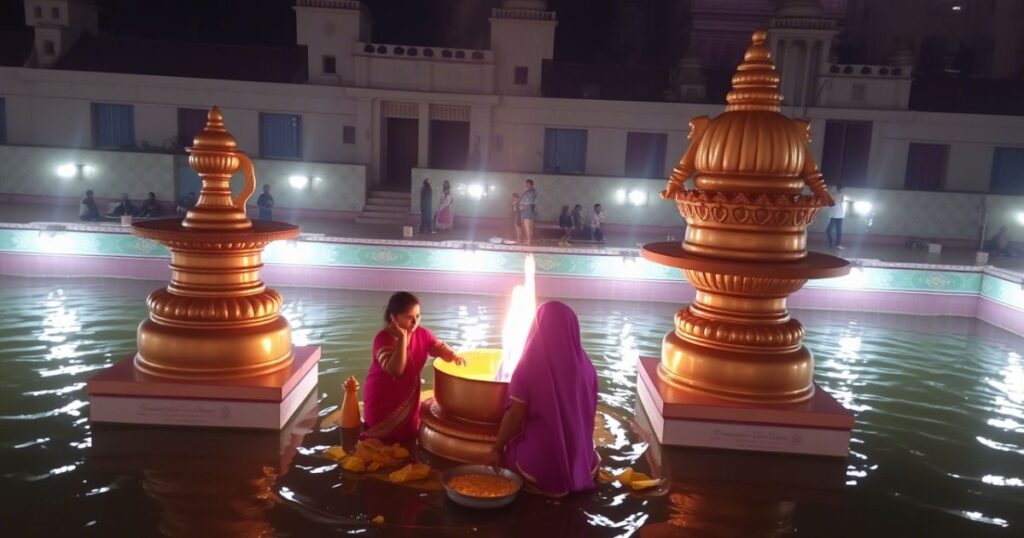
Located within the temple premises is a sacred pond known as Cheekati Koneru or Sathavarsha Pushkarani. Devotees believe the water here has healing properties and dip their hands or feet as a gesture of cleansing.
During certain festivals, this pond is used for holy dips and ritual baths. It plays a vital role in maintaining the ritual purity and traditions of the temple.
Festivals of Mangalagiri Panakala Narasimha Temple
Apart from Brahmotsavam, the temple also hosts special rituals every Sunday and during Ekadasi days. These are considered especially auspicious for seeking blessings from Panakala Swamy.
Locals from surrounding towns and tourists from across India flock here during these times, transforming Mangalagiri into a hub of spiritual celebration.
How to Reach Pankala Narasimha Swamy Temple

Wondering, “Where is Panakala Narasimha Swamy Temple located?” — It lies in Mangalagiri, between Vijayawada and Guntur in Andhra Pradesh.
- By Air: The nearest airport is Vijayawada International Airport (~20 km away).
- By Train: Mangalagiri Railway Station is just 3 km from the temple. Vijayawada Junction is also nearby.
- By Road: Well-connected by national highways; frequent buses and taxis are available
FAQS
What are the benefits of visiting Narasimha Swamy Temple?
Visiting the Narasimha Swamy Temple is believed to remove fears, grant protection, and bring peace and strength through Lord Narasimha’s blessings.
How many steps are in Narasimha Swamy Temple?
There are around 600 steps leading up to the Panakala Narasimha Swamy Temple at Mangalagiri.
What is the history of Narasimhar Temple?
The Narasimhar Temple dates back to ancient times and is linked to the legend of Lord Vishnu’s Narasimha avatar destroying evil and protecting devotees.
Which day is best for Narasimha?
Saturdays and Swathi Nakshatram days are considered most auspicious for worshipping Lord Narasimha.
Which is the most powerful Narasimha Swamy Temple?
Ahobilam in Andhra Pradesh is regarded as the most powerful and sacred Narasimha Swamy Temple in India.
Conclusion
To Visit Pankala Narasimha Swamy Temple is to take part in a sacred journey that blends myth, devotion, and peace. With its miraculous rituals, powerful legends, and serene setting, the temple offers something no travel guide can fully describe—you have to feel it for yourself.
So, whether you’re a devotee, a traveler, or someone just curious about traditional beliefs around Narasimha Swamy, make sure this majestic temple is on your itinerary. The Lord waits—with jaggery water and open arms.

